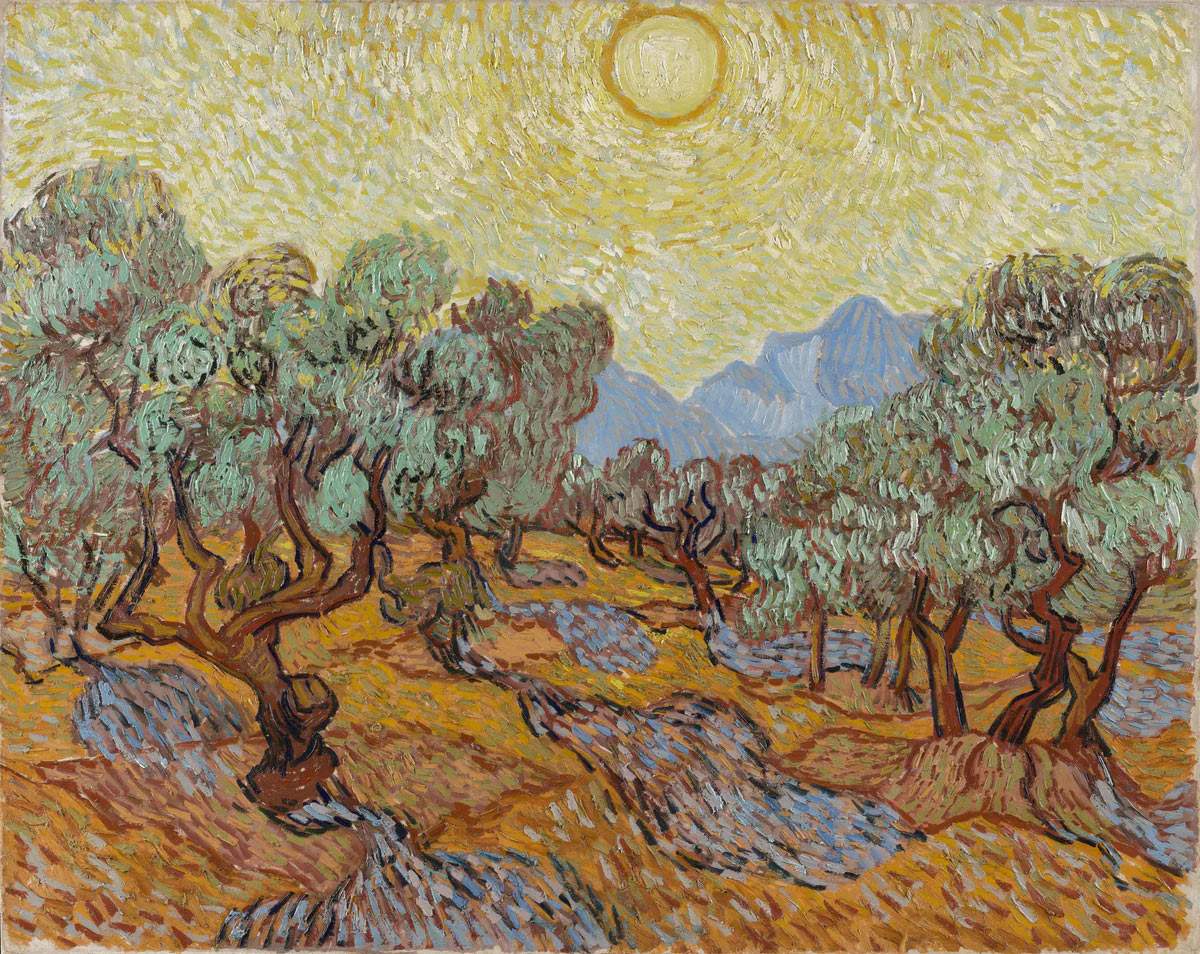All of Van Gogh's olive trees in one exhibition
All of Vincent van Gogh ’s olive groves in one exhibition: this is Van Gogh and the Olive Groves, an exhibition that opened last March 9 and will remain on view until June 12 at the Van Gogh Museum in Amsterdam, curated by Nienke Bakker and Nicole R. Myers. The exhibition, organized in collaboration with the Dallas Museum of Art (where the show has already been presented: it closed last Feb. 6), focuses on the fifteen paintings of olive groves that Vincent van Gogh made in 1889 in Saint-Rémy-de-Provence: the painter himself believed that these works were among the best he had done in the south of France. Thanks to exceptional loans from museums in the United States and Europe, this important group of paintings is now brought together and exhibited together: there are paintings such as The Olive Trees from the Minneapolis Institute of Art,Olive Grove from the Gothenburg Museum of Art, and Women Harvesting Olives from the Basil & Elise Goulandris Foundation, Athens.
Van Gogh was admitted to the Saint-Rémy-de-Provence psychiatric hospital for a year in 1889: the asylum was surrounded by olive groves, and soon after his arrival Van Gogh was fascinated by the gnarled shapes of the olive trees and the play of light on the color of their leaves. Thus, the artist, between June and December 1889, painted a significant series of fifteen paintings, capturing the olive groves at various times of day and in different seasons. In his quest to discover the typical characteristics of the olive tree, which for him characterized Provence, he experimented with colors, lines and expressive forms. “The olive trees,” he wrote in a letter to his brother Theo dated September 28, 1889, “are very characteristic and I am struggling to capture them. They are silver, sometimes bluer, sometimes greenish, bronzed, whitish on a ground ranging from yellow, pink, purplish or orange to dull red ochre.”
The exhibition displays 25 paintings and drawings that show Van Gogh’s intense personal and spiritual attachment to olive trees, his changing painting style, his ambitions when painting olive groves, and his unwavering faith in the care that art can offer to the soul (Van Gogh suffered from severe psychiatric problems and in Saint-Rémy found solace in painting and nature), all while also highlighting Van Gogh’s habit of producing series of paintings on the same subject and his approach to painting olive groves: how he varied his colors, composition, and brushstrokes, how he often worked not only outdoors but also inside his studio, and how he made several versions of a single olive grove. In his paintings of olive groves, he wanted to express the calming feelings of eternity and unity that he experienced in the countryside.
“This exhibition,” says Emilie Gordenker, director of the Van Gogh Museum, “is the result of years of intensive research and is a rare opportunity to see this group of works together. These extraordinary paintings convey Van Gogh’s love of nature and his belief that art can offer solace.” Van Gogh and the Olive Groves brings together works from around the world, some of which have never before been exhibited at the Van Gogh Museum and others will return to the Netherlands for the first time in more than a century. Outstanding loans include Olive Groves from the Nelson-Atkins Museum of Art in Kansas City, Van Gogh’s first major painting of an olive grove in summer weather. This work has never before been exhibited in the Netherlands. The same is true of Olive Trees at the Minneapolis Institute of Art, one of a group of olive groves that Van Gogh painted in the fall of 1889. This is the only composition in the series that depicts the sun, a symbol of the brilliant light and warmth of la Provence, and mountains.
Because the exhibition offered a unique opportunity to study Van Gogh’s olive trees, curators Nienke Bakker and Nicole R. Myers established a partnership project to analyze all the works in the series in detail. In collaboration with conservators and researchers from the museums housing these works, Van Gogh Museum conservator Kathrin Pilz conducted comparative research on Van Gogh’s techniques, pigments, and materials in this series. This research produced valuable information about the order in which the paintings were made, Van Gogh’s use of color, and how he worked both outdoors and in his studio. The results have been published in an academic catalog, Van Gogh and the Olive Groves, Dallas Museum of Art/Van Gogh Museum (2021). The exhibition is supported by the Netherlands Ministry of Education, Culture and Science and the museum’s partners (VriendenLoterij, Van Lanschot and ASML), as well as the Mondriaan Fund, Monini, the Netherland-America Foundation and The Sunflower Collective. For all information you can visit the Van Gogh Museum website.
Image: Vincent van Gogh, Olive Trees (1889; oil on canvas, 73.6 x 92.7 cm; Minneapolis, Minneapolis Institute of Art)
 |
| All of Van Gogh's olive trees in one exhibition |
Warning: the translation into English of the original Italian article was created using automatic tools. We undertake to review all articles, but we do not guarantee the total absence of inaccuracies in the translation due to the program. You can find the original by clicking on the ITA button. If you find any mistake,please contact us.





























